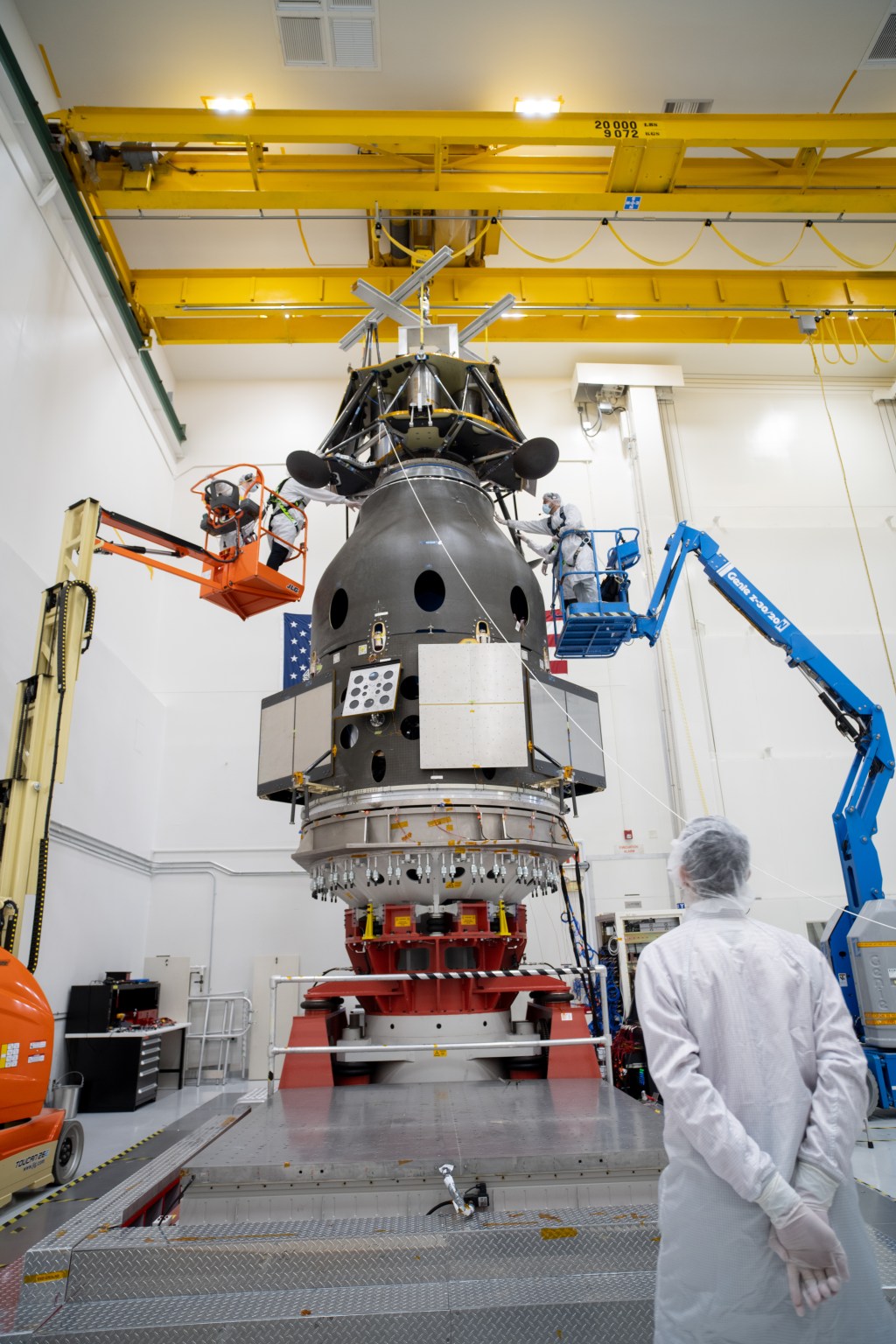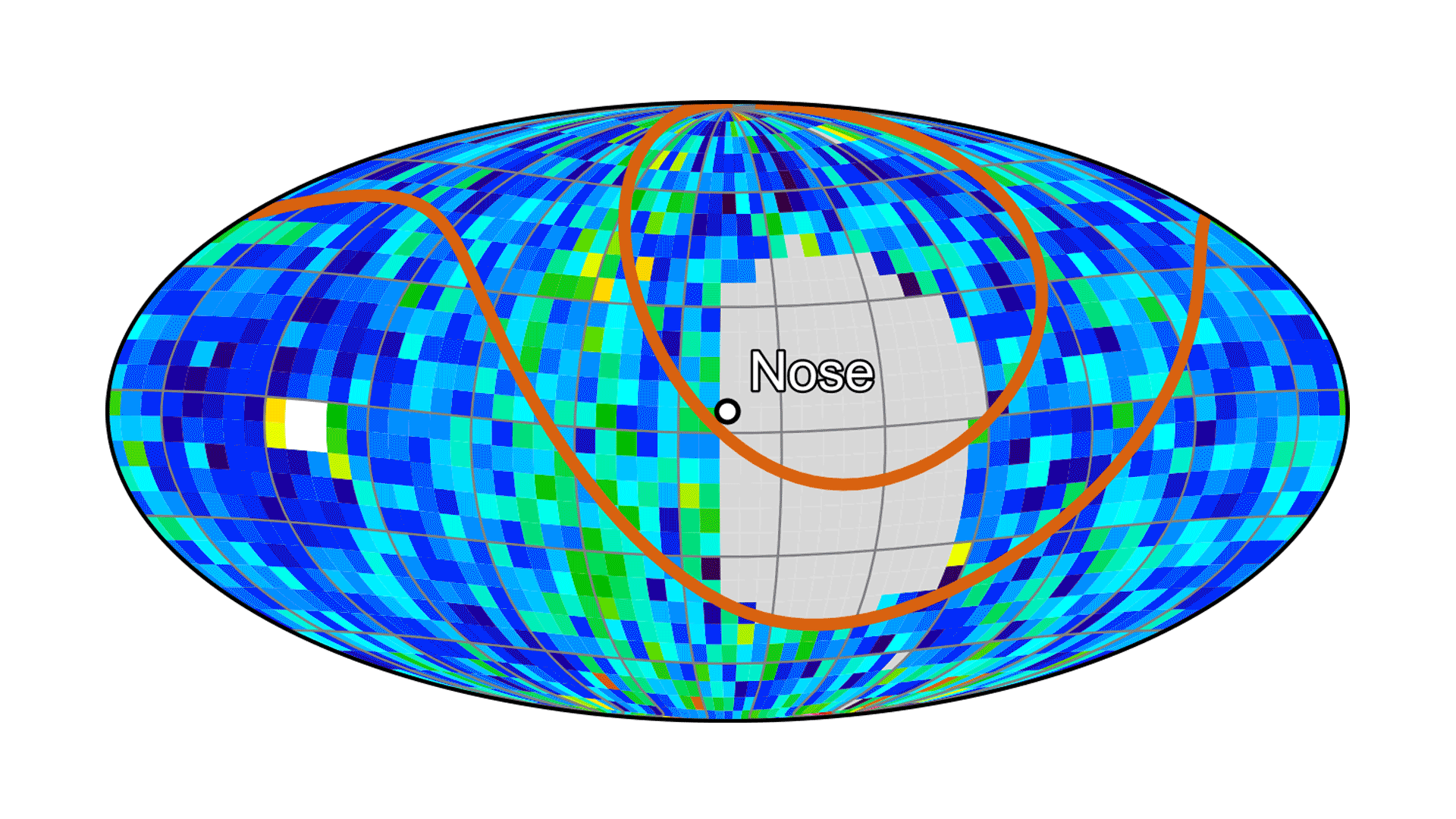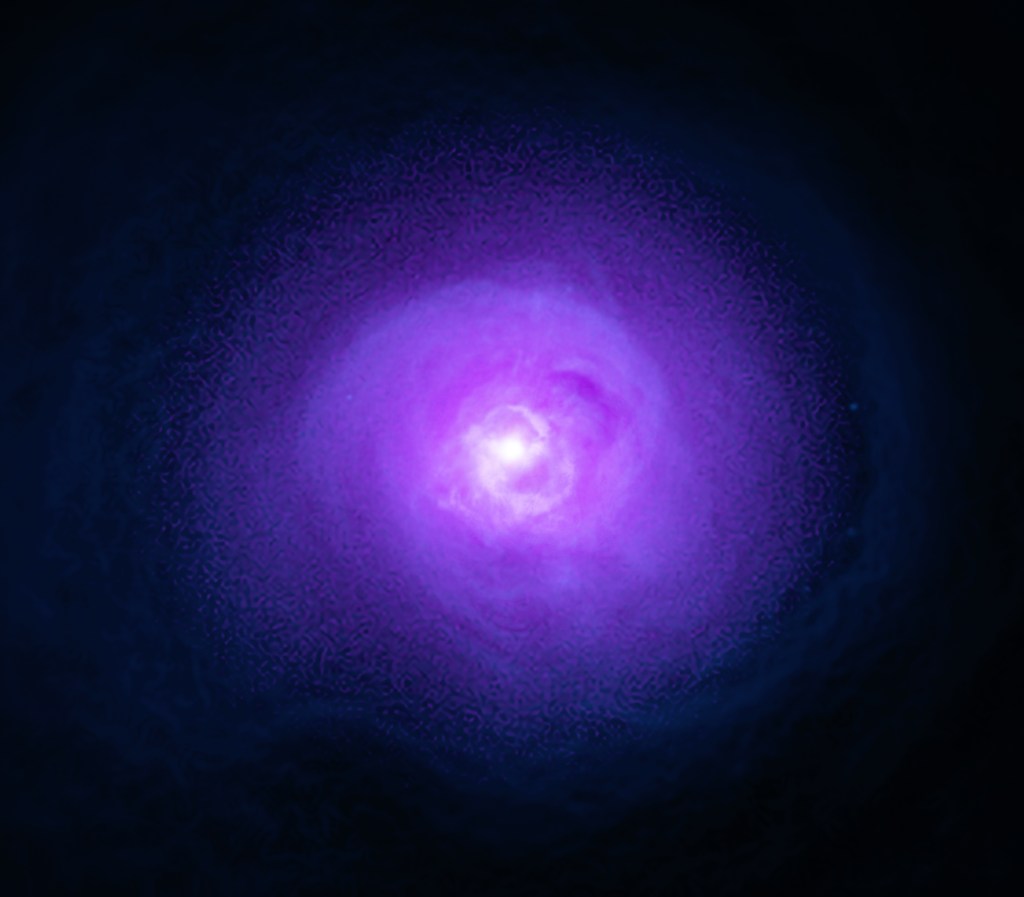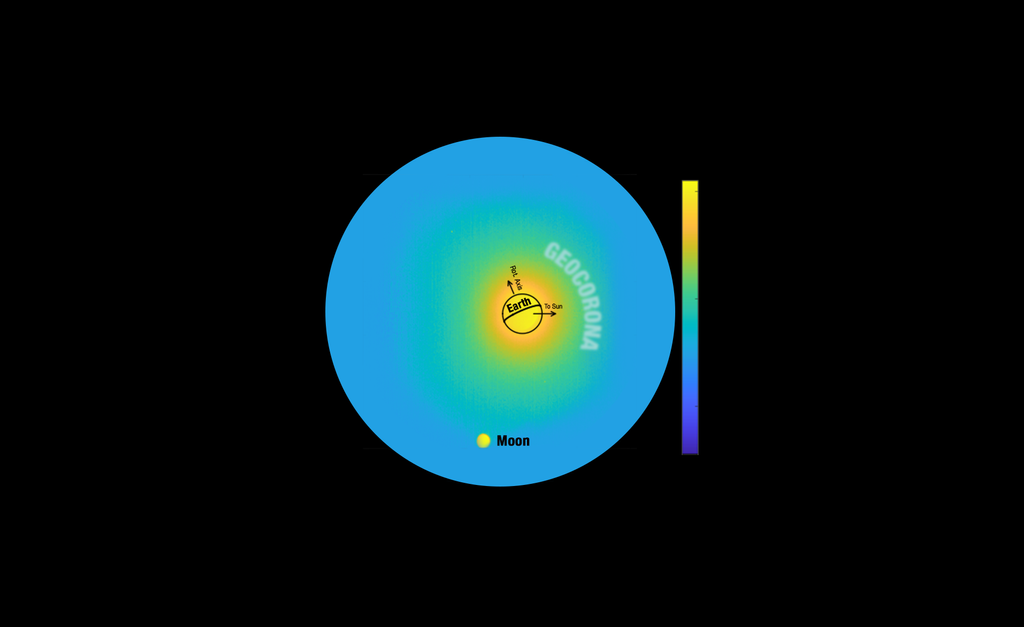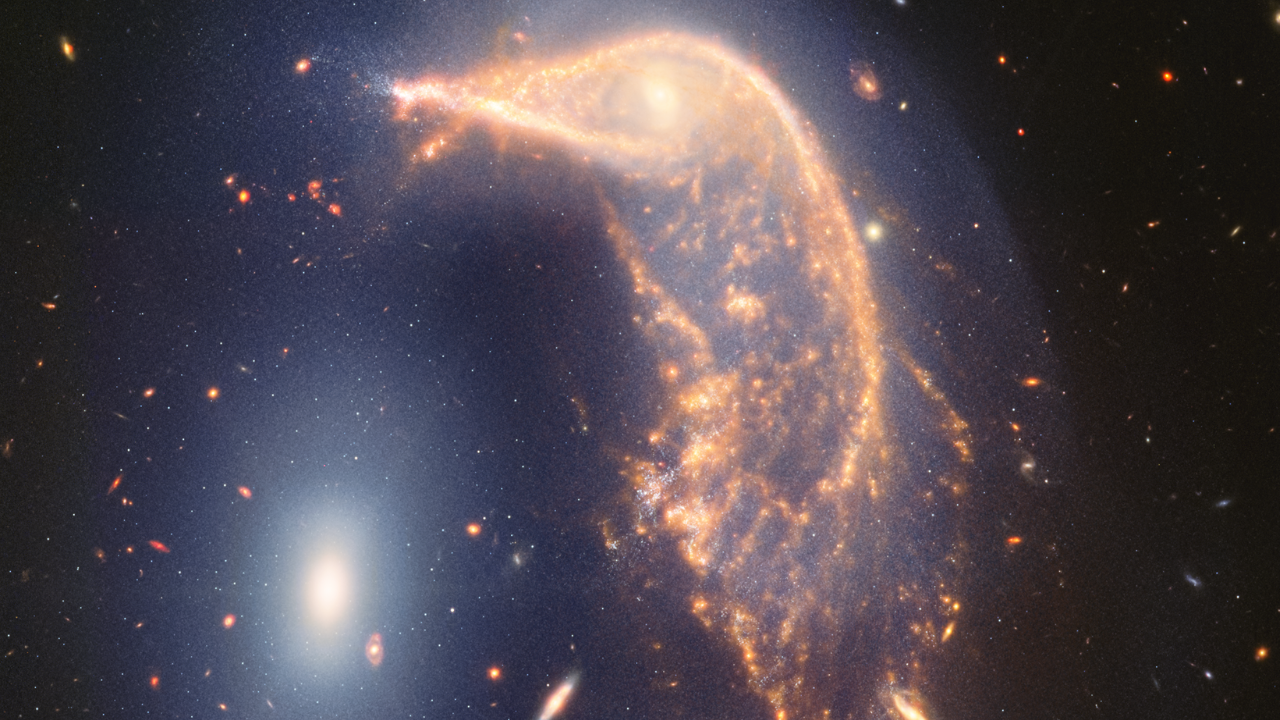1 min read
Interacting Galaxies Arp 142 (Hubble and Webb Image)
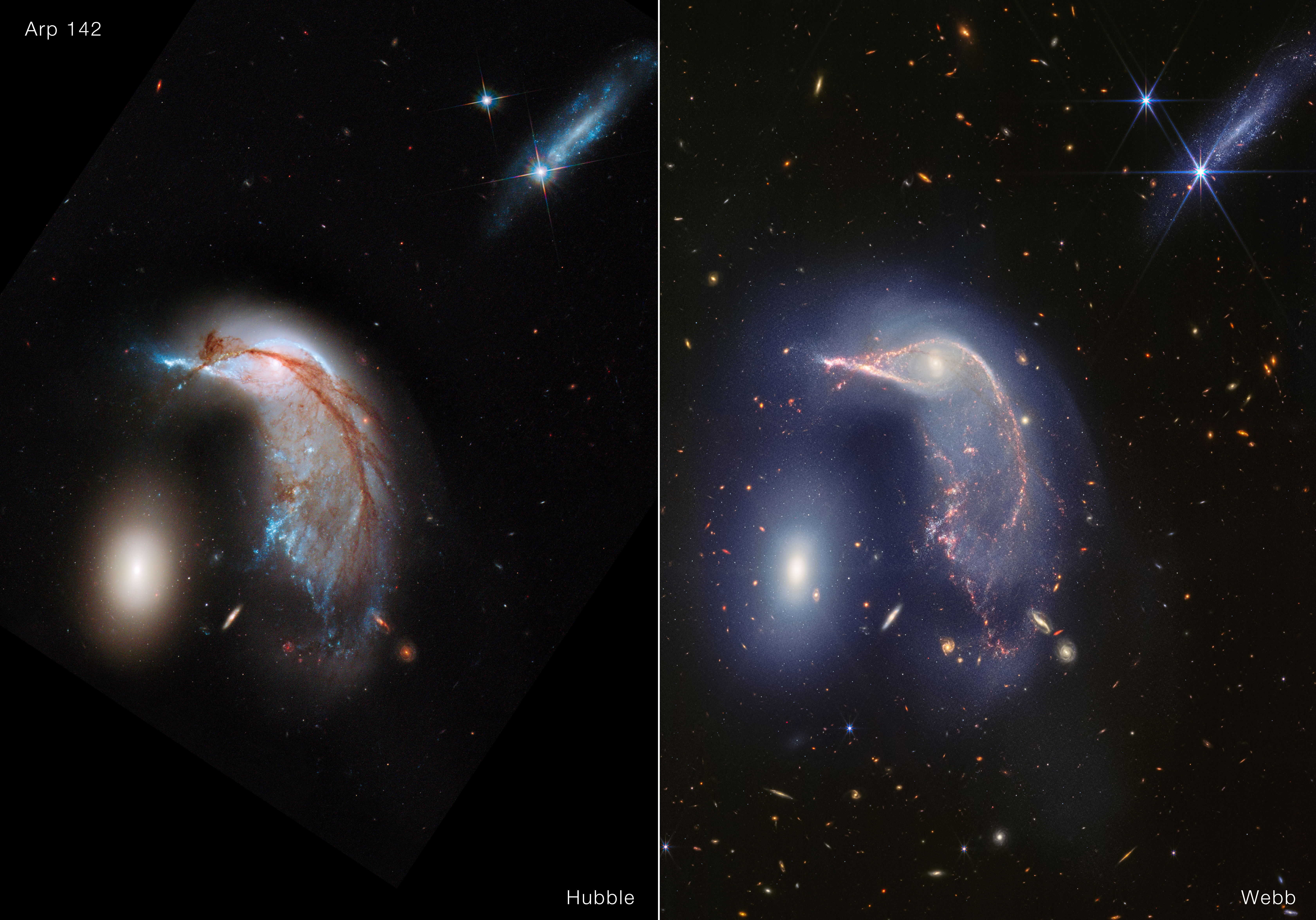
Two penguins, two eggs — two very different color schemes!
The Hubble Space Telescope captured visible light when observing Arp 142, nicknamed the Penguin and the Egg, in 2013.
At right is the James Webb Space Telescope’s near-infrared light view of the same region.
Both images are made up of several filters. The process of applying color to Webb’s images is remarkably similar to the approach used for Hubble: The shortest wavelengths are assigned blue and the longest wavelengths are assigned red. For Webb, image processors translate near-infrared light images, in order, to visible colors. Both telescopes take high-resolution images, so there are many features to explore.
In Hubble’s visible light image, a dark brown dust lane begins across the Penguin’s “beak” and extends through its body and along its back. In Webb’s near-infrared view, this dust lane is significantly fainter.
Linger on Webb’s image. A faint upside-down U shape joins the pair of galaxies. This is a combination of stars, gas, and dust that continues to mix as the galaxies mingle. In Hubble’s view, notice there is a clearer gap between the Penguin’s “beak” and the top of the Egg. Toward the bottom of the Penguin’s tail are several prominent spiral galaxies, though there are a few more in Webb’s image.
The Egg itself looks similar in both images, but in Webb’s view, the galaxy shines so brightly that it causes diffraction spikes to slightly extend its gleam. The galaxy at top right appears about the same size, but many more pinpricks of stars appear in Webb’s view.
Now, compare the backgrounds. Hubble shows many distant galaxies in visible light, though areas in the corners that are completely black were outside the telescope’s field of view. Many more distant galaxies gleam in Webb’s infrared image. This is a testament to the sensitivity and resolution of Webb’s near-infrared camera, and the advantages of infrared light. Light from distant galaxies is stretched as it travels across the universe, so a significant portion of their light can only be detected in longer wavelengths. Learn more about the benefits of observing infrared light.
Explore Webb’s near- and mid-infrared light image and its mid-infrared light-only image.
Extended Description and Image Alt Text
Extended Description
This frame is split down the middle. Hubble’s visible light image is shown at left, and Webb’s near-infrared image at right. The background of space is largely black in both images. Both images show NGC 2936 at left, which is nicknamed the Egg, and NGC 2936 at right, nicknamed the Penguin.
The background of Hubble’s visible light image appears darker, with fewer points of light. The Penguin is highly detailed, with a bright blue beak, body, and tail that is covered in an arc of dark brown dust that sweeps from the beak area and ends beyond its tail feathers. The Egg, to its left, appears bright, gleaming largely in yellowish white. The Penguin and the Egg appear separate in this view. Around and behind them are small galaxies in an array of bright reds, greens, and blues, some dotted near the Penguin’s tail feathers and more toward the top of the view. At top right is another galaxy seen from the side, like a disk, pointing roughly at a 45-degree angle. It is light blue and speckled with star clusters. Its length appears approximately as long as the Egg’s height. One foreground star with four large, bright blue diffraction spikes appears along its lower left, and another slightly smaller foreground star appears above it. Dozens of galaxies and stars appear throughout the background. Some galaxies are shades of orange, while others are white.
Webb’s near-infrared image appears busier, with many more points of light. The Penguin’s beak-like region points toward and is above the Egg. The outline of the Penguin’s beak, head, and back appear in shades of pink. It’s tail-like region is more diffuse, and a mix of lighter pinks as well as blues. The Egg, to its left, appears slightly larger, with additional, diffuse blue layers. A semi-transparent blue traces the entire Penguin and extends away, forming an upside down U over top of both galaxies. At top right is another galaxy seen from the side, like a disk, pointing roughly at a 45-degree angle. It is light blue and speckled with clear pinpricks that are star clusters. Its length appears approximately as long as the Egg’s height. One foreground star with eight large, bright blue diffraction spikes appears along its lower left, and another slightly smaller foreground star appears above it. Thousands of galaxies and stars appear throughout the background. Some galaxies are shades of orange, while others are white.
Image Alt Text
Frame is split down the middle: Hubble’s visible light image at left, and Webb’s near-infrared image at right. Both show the Egg at left and the Penguin at right.
About the Object
- R.A. PositionR.A. PositionRight ascension – analogous to longitude – is one component of an object's position.09:37:43.09
- Dec. PositionDec. PositionDeclination – analogous to latitude – is one component of an object's position.02:45:47.01
- ConstellationConstellationOne of 88 recognized regions of the celestial sphere in which the object appears.Hydra
- DistanceDistanceThe physical distance from Earth to the astronomical object. Distances within our solar system are usually measured in Astronomical Units (AU). Distances between stars are usually measured in light-years. Interstellar distances can also be measured in parsecs.326 million light-years
About the Data
- Data DescriptionData DescriptionProposal: A description of the observations, their scientific justification, and the links to the data available in the science archive.
Science Team: The astronomers who planned the observations and analyzed the data. "PI" refers to the Principal Investigator. - InstrumentInstrumentThe science instrument used to produce the data.Hubble: WFC3/UVIS; Webb: NIRcam
- Exposure DatesExposure DatesThe date(s) that the telescope made its observations and the total exposure time.Hubble: June 22, 2012; Webb: May 6, 2024
- FiltersFiltersThe camera filters that were used in the science observations.Hubble: F475W, F606W, F814W; Webb: F090W, F150W, F200W, F277W, F356W, F444W
- Object NameObject NameA name or catalog number that astronomers use to identify an astronomical object.Arp 142, NGC 2396/2397
- Object DescriptionObject DescriptionThe type of astronomical object.Interacting Galaxies
- Release DateJuly 12, 2024
- Science ReleaseVivid Portrait of Interacting Galaxies Marks Webb’s Second Anniversary
- CreditImage: NASA, ESA, CSA, STScI
Related Images & Videos
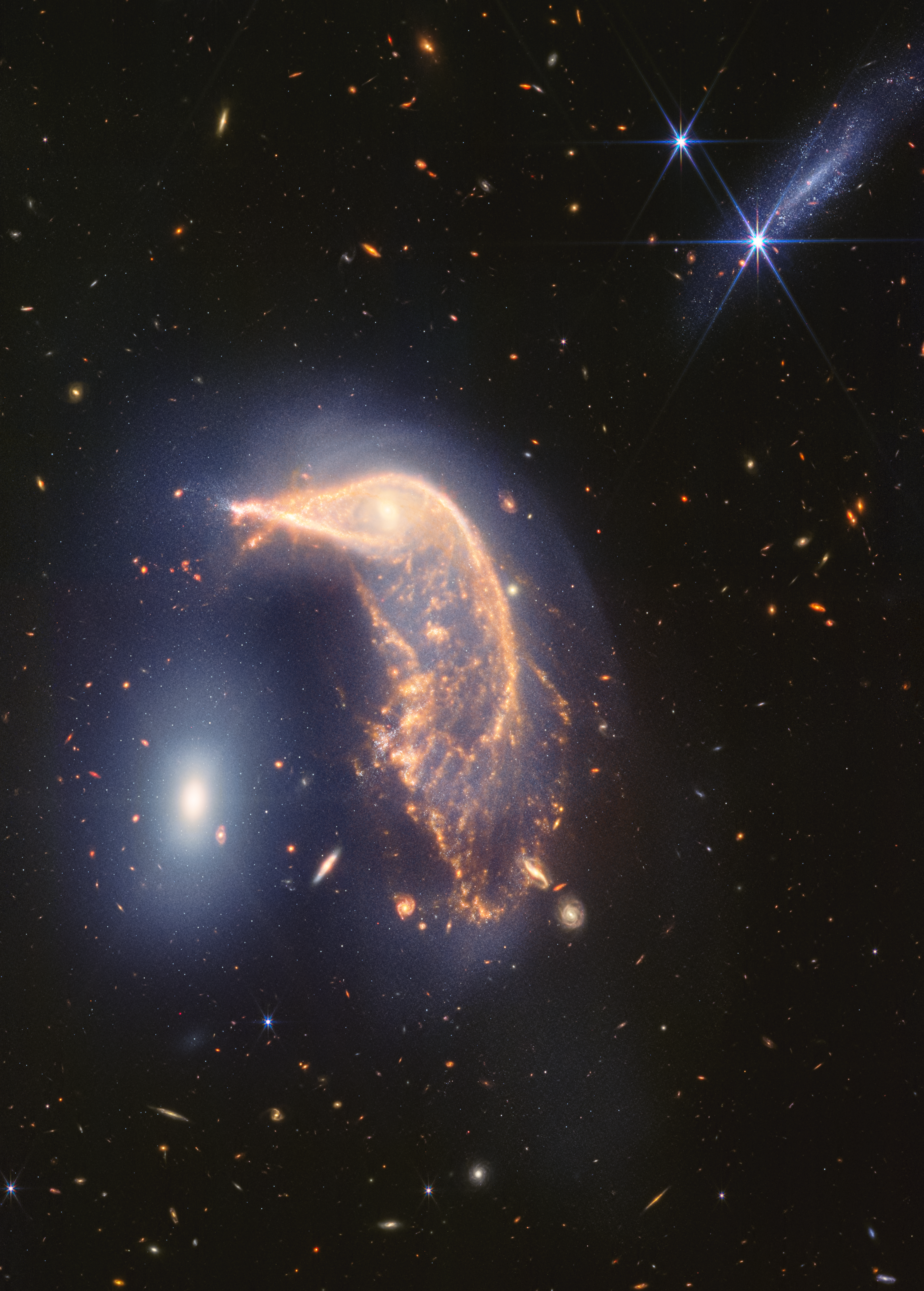
Interacting Galaxies Arp 142 (NIRCam and MIRI Image)
This “penguin party” is loud! The distorted spiral galaxy at center, the Penguin, and the compact elliptical galaxy at left, the Egg, are locked in an active embrace. A new near- and mid-infrared image from the James Webb Space Telescope, taken to mark its second year of...
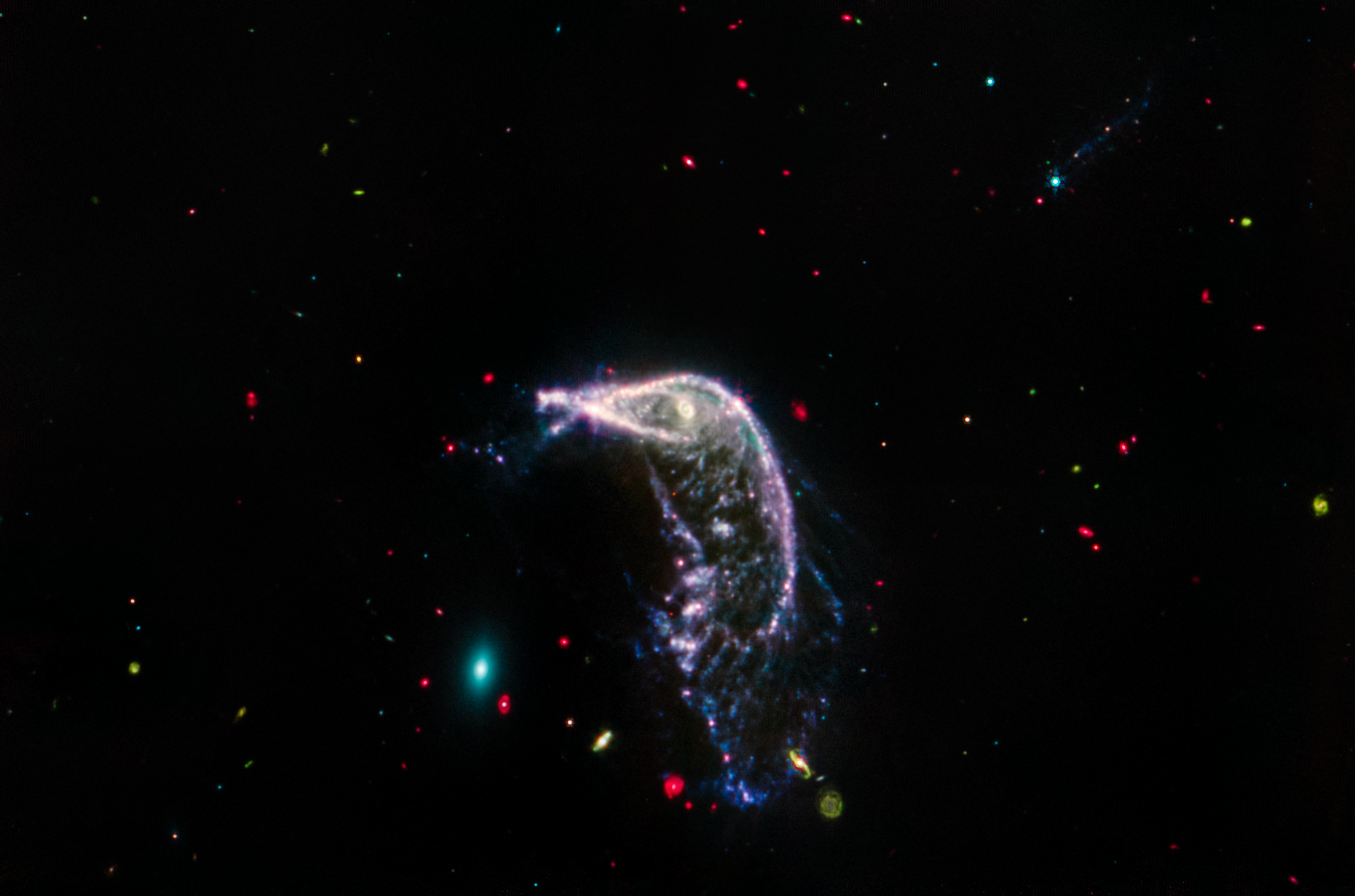
Interacting Galaxies Arp 142 (MIRI Image)
Webb’s mid-infrared view of interacting galaxies Arp 142 seems to sing in primary colors. The background of space is like a yawning darkness speckled with bright, multi-colored beads. This image was taken by MIRI , the telescope’s Mid-Infrared Instrument, which astronomers use...
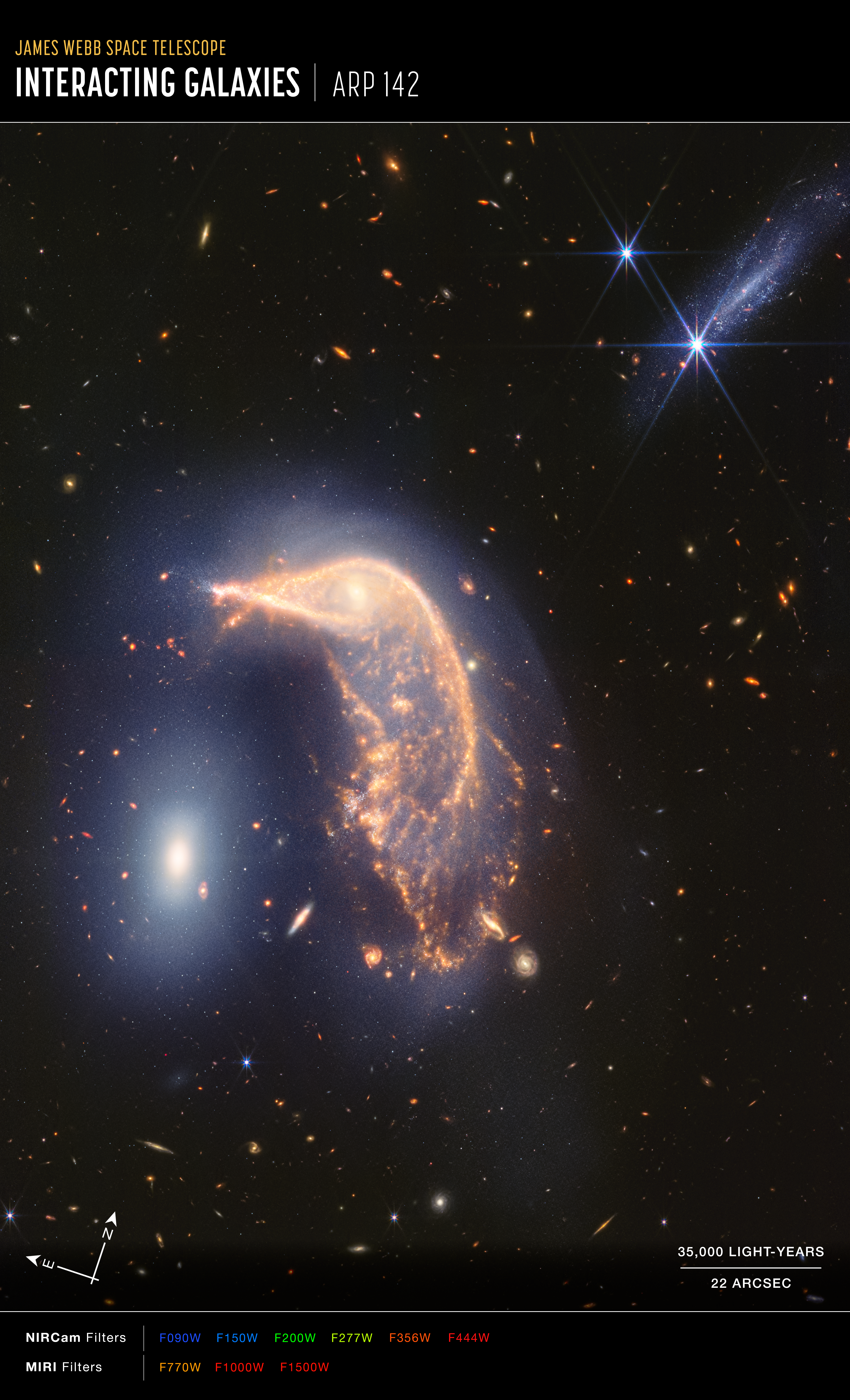
Interacting Galaxies Arp 142 (NIRCam and MIRI Compass Image)
This image of interacting galaxies Arp 142, captured by the James Webb Space Telescope’s NIRCam (Near-Infrared Camera) and MIRI (Mid-Infrared Instrument), shows compass arrows, scale bar, and color key for reference. The north and east compass arrows show the orientation of the...
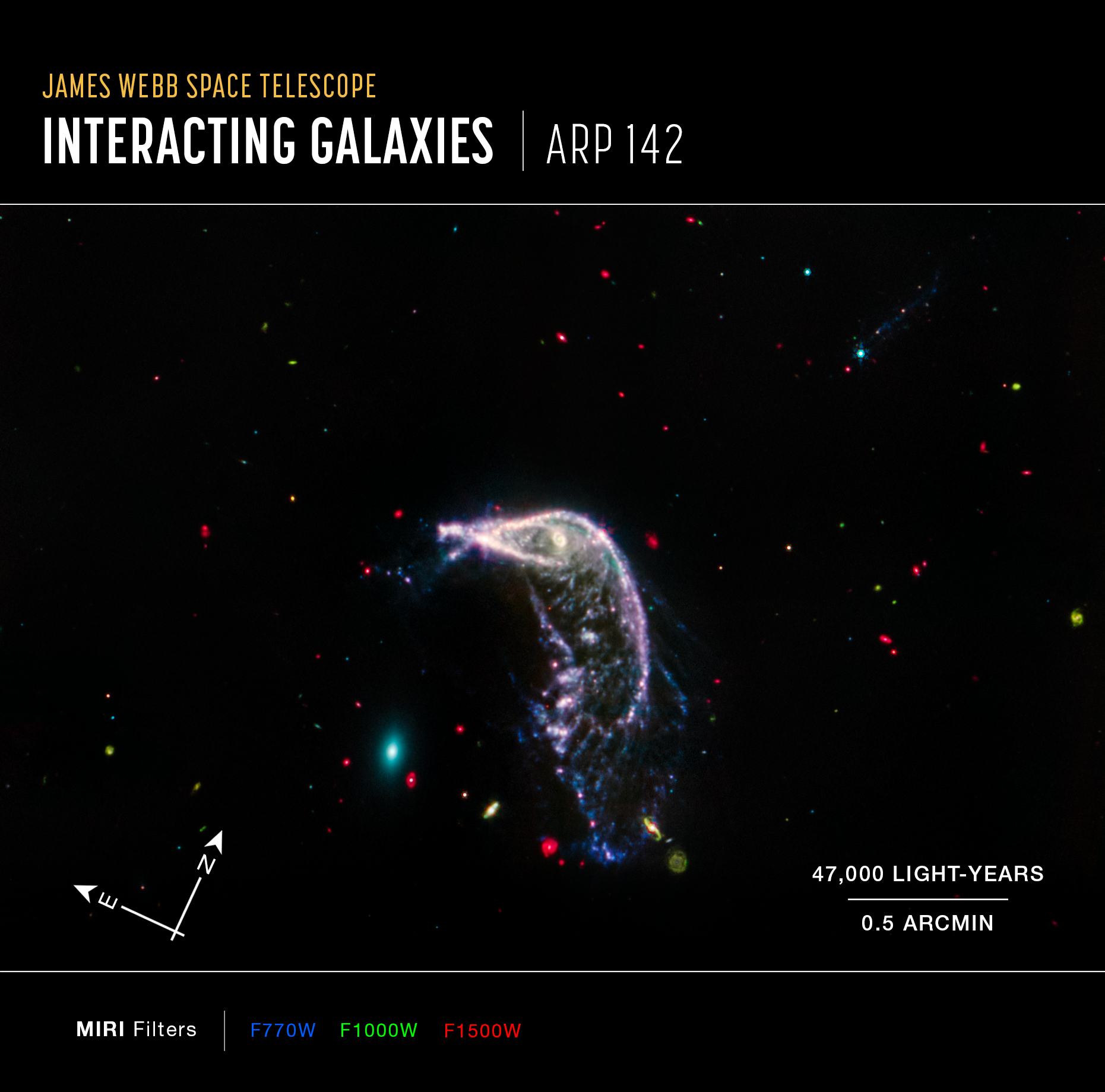
Interacting Galaxies Arp 142 (MIRI Compass Image)
This image of interacting galaxies Arp 142, captured by the James Webb Space Telescope’s MIRI (Mid-Infrared Instrument), shows compass arrows, scale bar, and color key for reference. The north and east compass arrows show the orientation of the image on the sky. Note that the...
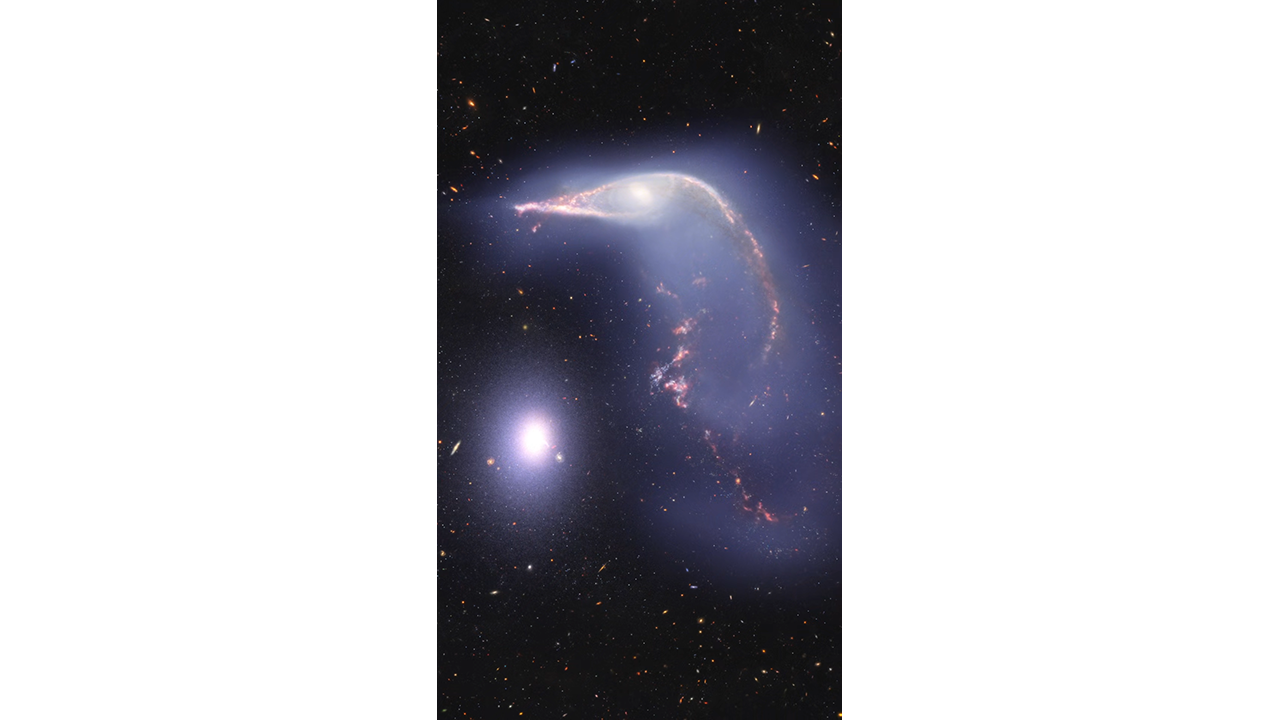
Arp 142 Visualization
This visualization examines the three-dimensional structure of Arp 142, a pair of interacting galaxies nicknamed the Penguin and the Egg, as seen in near-infrared light by the James Webb Space Telescope. The Penguin, a spiral galaxy cataloged as NGC 2936, has passed by the Egg,...
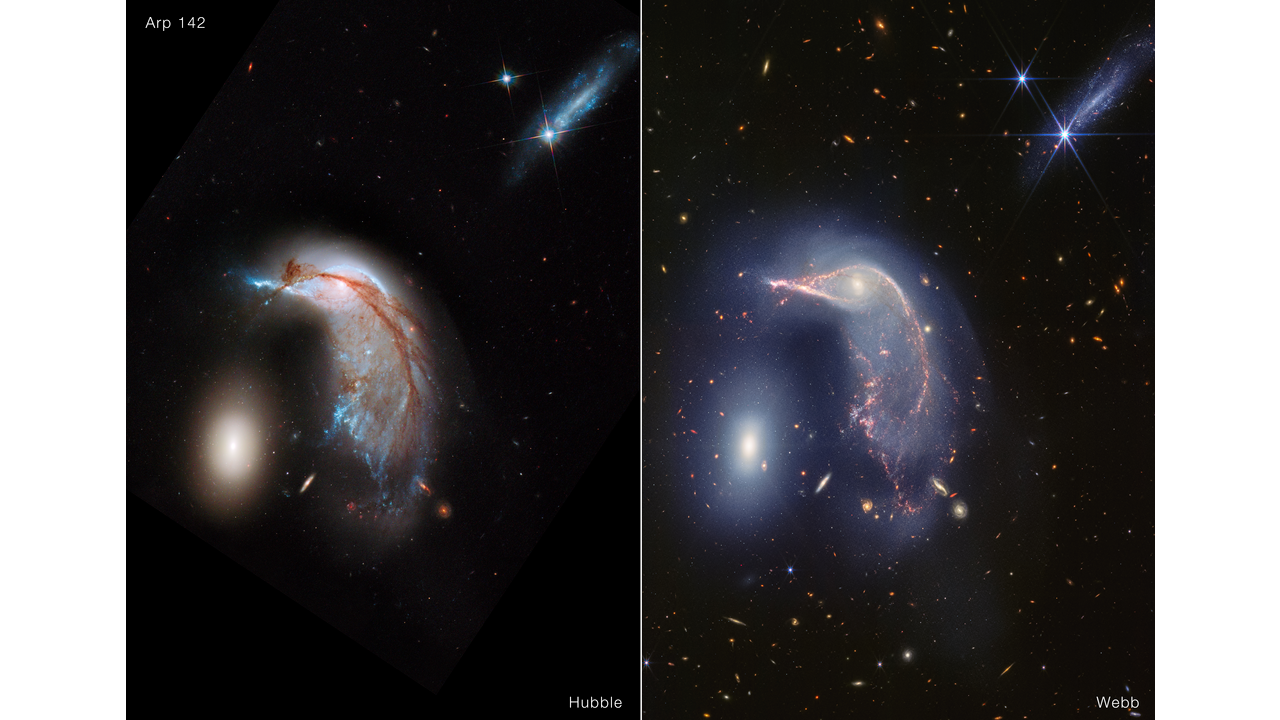
Arp 142 Hubble to Webb Fade
This video compares images of two interacting galaxies cataloged Arp 142, nicknamed the Penguin and the Egg. The first image is in visible light, and was captured by the Hubble Space Telescope’s Wide Field Camera 3 (WFC3). The second shows near-infrared light observed by the...
Share
Details
Laura Betz
NASA’s Goddard Space Flight Center
Greenbelt, Maryland
laura.e.betz@nasa.gov
NASA, ESA, CSA, STScI











